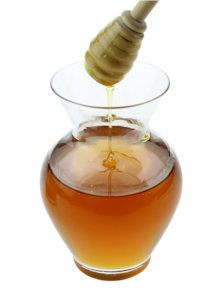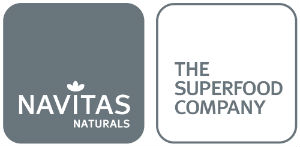The Scoop on Honey
- 10, 25, 2016
- Category Uncategorized
- Posted By TheraCuisine
- Comments Off on The Scoop on Honey
 Honey is a great shelf stable item – meaning it lasts for years without refrigeration due to its natural ability to resist against the growth of molds and bacterias. It is made from the nectar or sugar of flowers (or sucrose) that is broken down into fructose and glucose (other types of sugars) by the saliva of bees. The type of flower nectar that the bees make the majority of their honey from will influence the flavor, aroma and color of the honey. There are hundreds of different types of honey available to buy online, in stores and at farmer’s markets. The most common varieties found in grocery stores are produced from clover, alfalfa, wildflowers and citrus blossom. However, grocery store honey is often ultra-pasteurized and highly-filtered which removes the natural healthy aspects and the pollen from the product. A lack of pollen in honey makes the traceability of its origin impossible, which can hide the fact that it comes from poor quality supplies and questionable sources. Therefore, it is best to purchase an organic, raw and un-filtered or minimally processed product to make sure you are getting a high quality, pure and reputably-sourced honey.
Honey is a great shelf stable item – meaning it lasts for years without refrigeration due to its natural ability to resist against the growth of molds and bacterias. It is made from the nectar or sugar of flowers (or sucrose) that is broken down into fructose and glucose (other types of sugars) by the saliva of bees. The type of flower nectar that the bees make the majority of their honey from will influence the flavor, aroma and color of the honey. There are hundreds of different types of honey available to buy online, in stores and at farmer’s markets. The most common varieties found in grocery stores are produced from clover, alfalfa, wildflowers and citrus blossom. However, grocery store honey is often ultra-pasteurized and highly-filtered which removes the natural healthy aspects and the pollen from the product. A lack of pollen in honey makes the traceability of its origin impossible, which can hide the fact that it comes from poor quality supplies and questionable sources. Therefore, it is best to purchase an organic, raw and un-filtered or minimally processed product to make sure you are getting a high quality, pure and reputably-sourced honey.
Raw honey will typically contain 38% fructose, 31% glucose and 7% maltose and other substances. Honey in its liquid form will granulate (become crystalized) more quickly when the percentage of glucose crystals in it is higher (as in alfalfa, buckwheat and clover honey), when it is kept for a long time, or it is stirred or whipped. Honey that contains a lot of protein (such as heather honey) will granulate at a slower pace. However, once honey does granulate, it can be turned back to a liquid state by gently warming it (not cooking or boiling) for about 30 minutes at 140°- 150°F to dissolve the glucose crystals and prevent them from easily re-granulating thereafter.
Fine honeys should always be kept and eaten raw and added to recipes that require no cooking or call for adding the honey after the recipe is cooked. Cooking will destroy the delicate aromatic properties of the honey and make it smell more like caramel because of the cooked sugars. Therefore, if you want delightful floral aromas and healthy aspects such as natural enzymes, nutrients and antioxidants in your honey, be sure to buy it raw, minimally processed and unfiltered, and only use it in recipes that are not cooked or very minimally heated like my “Fiery, Sweet & Sour Cucumber Salad” recipe.
Visit our Sponsors
Latest Recipes
- January is National Soup Month – Host a Soup Crawl
- Fiery, Sweet & Sour Cucumber Salad
- Celebrate In and Out of Season
- The Scoop on Honey
- Saffron – Expensive, but as Internationally Loved as The Olympics


